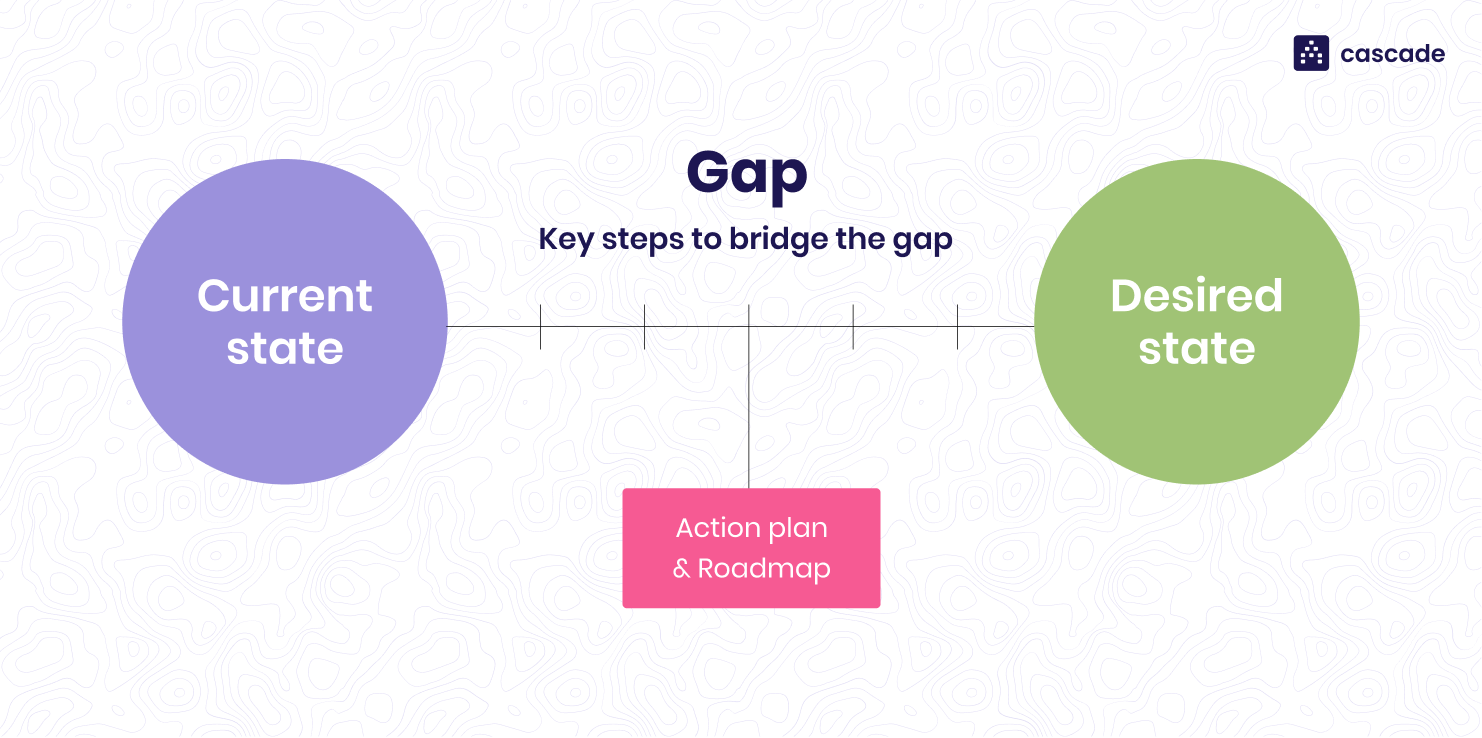GAP analysis is a strategic tool that businesses use to evaluate the difference or “gap” between their current performance and their desired goals. This powerful technique helps organizations identify areas for improvement, make informed decisions, and develop strategies to bridge the gap effectively. In this comprehensive guide, we will delve into the usage, applications, tools, results, advantages, and shortcomings of GAP analysis in simple English.
Understanding GAP Analysis
GAP analysis involves comparing the current state of affairs within an organization with its desired or target state. By identifying the gaps between these two states, businesses can gain valuable insights into what needs to be done to achieve their objectives effectively. This analysis is often used in strategic planning, project management, process improvement, and performance evaluation.
Tools Used in GAP Analysis

SWOT Analysis:
SWOT (Strengths, Weaknesses, Opportunities, Threats) analysis is a commonly used tool in GAP analysis to assess internal strengths and weaknesses as well as external opportunities and threats.
Benchmarking:
Benchmarking involves comparing an organization’s performance metrics with those of industry leaders or competitors to identify areas of improvement.
Performance Metrics:
Utilizing key performance indicators (KPIs) and performance metrics helps in quantifying the gaps between current and desired performance levels.
Customer Feedback:
Gathering feedback from customers through surveys, interviews, and feedback mechanisms provides valuable insights into areas where customer expectations are not being met.
Applications of GAP Analysis
Strategic Planning:
Businesses use GAP analysis during strategic planning processes to align organizational goals with available resources and capabilities.
Process Improvement:
Identifying gaps in processes helps organizations streamline workflows, reduce inefficiencies, and optimize resource allocation.
Performance Evaluation:
GAP analysis is used to assess the performance of departments, teams, or individuals against predefined objectives and targets.
Product Development:
In product development, GAP analysis helps in understanding market demands, identifying features or functionalities lacking in current products, and aligning product offerings with customer expectations.
Actionable Insights:
GAP analysis provides actionable insights that enable organizations to prioritize initiatives, allocate resources effectively, and make informed decisions.
Goal Alignment:
By identifying gaps between current and desired states, GAP analysis helps in aligning organizational goals with strategic objectives and priorities.
Risk Mitigation:
Identifying gaps early on allows businesses to proactively address potential risks and challenges, reducing the likelihood of project failures or performance issues.
Advantages of GAP Analysis
Strategic Alignment:
GAP analysis ensures that organizational strategies and initiatives are aligned with business goals and objectives.
Data-Driven Decision-Making:
The use of data and metrics in GAP analysis enables evidence-based decision-making and strategy formulation.
Continuous Improvement:
By regularly conducting GAP analysis, organizations can foster a culture of continuous improvement and innovation.
Shortcomings of GAP Analysis
Limited Scope:
GAP analysis may not capture all aspects of a complex business environment, leading to oversimplified assessments.
Subjectivity:
Interpretation of GAP analysis results may vary based on individual perspectives, potentially leading to biased conclusions.
Lack of Real-Time Data:
In dynamic environments, relying solely on historical data for GAP analysis may not reflect current market trends or customer preferences accurately.
Conclusion
In conclusion, GAP analysis is a valuable tool that enables businesses to identify gaps between their current and desired states, make informed decisions, and achieve strategic objectives. By utilizing tools such as SWOT analysis, benchmarking, and performance metrics, organizations can gain actionable insights and drive continuous improvement. While GAP analysis has its advantages in strategic planning and decision-making, it’s essential to be aware of its limitations and supplement it with real-time data and diverse perspectives for a more comprehensive analysis.
External Resources:
- MindTools – Conducting a GAP Analysis: https://www.mindtools.com/pages/article/gap-analysis.htm
- Harvard Business Review – The Basics of GAP Analysis: https://hbr.org/2016/10/whats-your-gap-analysis-strategy
- Investopedia – Understanding GAP Analysis in Business: https://www.investopedia.com/terms/g/gap-analysis.asp



